The most grotesque videos on YouTube fit into a specific category. It consists of old footage run through an AI upscaler. Sometimes the videos are colorized, sometimes they’re interpolated to 60 frames per second. Uniformly they look atrocious, smeary, and garish, unless you don’t know what a film is supposed to look like. Increasingly that’s a lot of people, including, evidently, the people responsible for the latest transfers of the movie True Lies and to a lesser extent Aliens, The Abyss, and Titanic.
If you have never seen the movie True Lies, you are probably under 30. Arnold Schwarzenegger plays an agent in a government counter-terrorist organization that has to fight bad guys while keeping his dangerous lifestyle a secret from his mousey wife played by Jamie Lee Curtis. It’s a goofy big budget action comedy remake that has some fantastic set pieces, an incredible cast, some great bits, and ages exactly how you would expect from an airheaded action movie from 1994. In James Cameron’s career, It’s probably the weirdest movie James Cameron ever made outside of Piranha II: The Spawning.
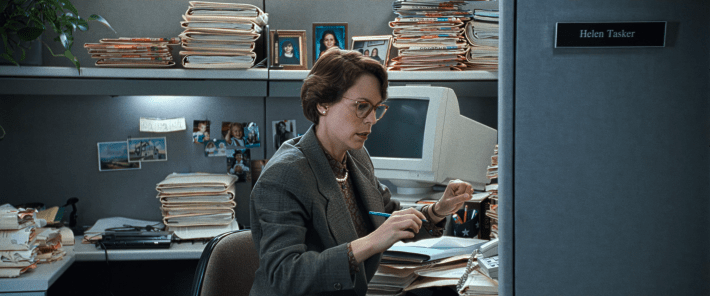
I have a deep fondness for this movie in my heart, partially because I played the pretty bad Super Nintendo game too much but also because it’s rare to get a comedy where the hero airholes the side of a skyscraper with a harrier jet. So when I saw people posting that it had gotten a garish transfer, I was particularly insulted. But even with prior warning, I was unprepared for how disgusting it looked.

The transfer of True Lies has a truly vile quality to it, a feeling like someone clandestinely dosed you with LSD just a hair below the threshold. At times it can look passable in motion, but then you notice something out of the corner of your eye: a thick fold of skin, a framed photo of a child, folders that are too thick at the margins, cheeks that look rendered. It’s that familiar dread at the pit of your gut when you spot AI generated imagery, a combination of edges not looking quite right and surfaces that are simultaneously too smooth and too sharp. A crime was committed here, and you can tell.
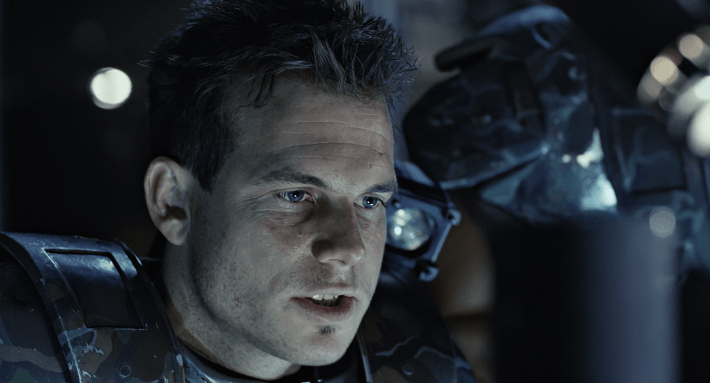
The transfers of Aliens and The Abyss are markedly less bad than True Lies, but I still have difficulty watching them. The skin looks sterile and waxy with too much film grain removed. Everything looks like it has raytracing on. Both transfers are, however, within acceptable parameters for most normal people.
The recent transfer of Titanic got a similar treatment, with similarly mixed reactions online.

“Why would you do this?” is a logical question. It’s worth contextualizing who handled these “restorations” – namely Park Road Post, a subsidiary of Peter Jackson’s WingNut Films. They have worked on multiple films in the past, but the two that are most germane here are Jackson’s They Shall Not Grow Old and the 3-part Disney+ documentary The Beatles: Get Back. Both movies recontextualize pre-existing footage and, importantly, do so with an aggressive use of machine learning. They Shall Not Grow Old upscales and colorizes old World War I imagery in an attempt to set the bloodshed in a more modern context, while Get Back recycled footage shot for Michael Lindsay-Hogg’s Let It Be, including moments never before seen by the public, to elucidate the process behind the creation of some of The Beatles’ most iconic songs.
I understand the intent of using machine learning in both works. In the case of Hogg’s Let it Be, much of the footage was chunky and rough, and they used audio isolation narratively in an interesting way.
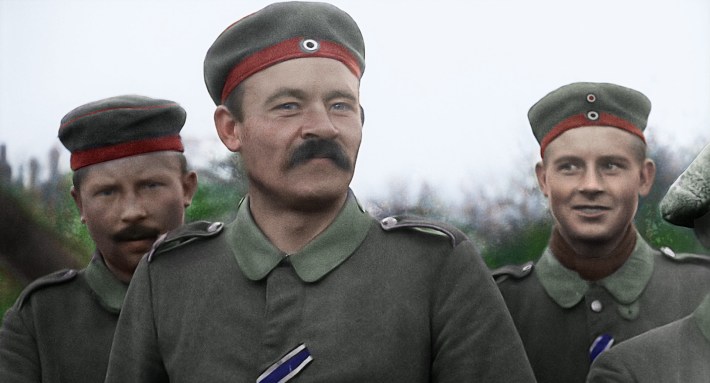
Unfortunately they both look really fucking bad. And they look worse as the years go on.
They Shall Not Grow Old is difficult to stomach, with the soldiers being motion interpolated in a melting, shambolic manner. The digital noise reduction is inconsistent – film grain is present on the skin of soldiers and absent in other places, following their faces like reptilian scales. This is an enthusiastic, clumsy use of a technology on severely damaged footage.

The same is true to a lesser extent for The Beatles: Get Back. Nobody would begrudge Jackson for color grading and restoring rough footage, but the effect is sterilizing and alien. Hair and fur coats are simultaneously shiny and oily, with gorgon-esque strands that undulate and melt into themselves. The folds of skin and clothing have an unnatural heft. The edges of objects will catch and melt into each other. The grain structure is slightly more natural than in They Shall Not Grow Old, but it looks like it was artificially added over heavily denoised footage. Get Back was wildly successful, in part because the only semi-available version of Let It Be is an atrocious DVD transfer, but also on the strength of 60 hours of unused footage, an unseen insight into an iconic band.

I wish we had stopped Jackson then and there. As my good friend Danielle joked, this was a trial balloon. People praised Jackson for doing this to Lindsay-Hogg’s footage in the name of restoration, and it emboldened him to do worse things. Before the True Lies debacle, the most recent example of this was the aggressively saccharine and confusing Now & Then, a long unfinished demo now finished by Ringo and Paul, edited together with archival footage of younger John and George composited in an a fashion that can be charitably described as tremendously weird.
Lest I am accused of being a luddite, I firmly believe there are many use cases for this technology. Nvidia’s DLSS and competing variants generally work very well on the games they are trained on. I regularly use Flowframes in the rare case that I need interpolation. I have often used waifu2x and now chainner if I need to photoshop a still and my source is bad, and there are databases of countless AI upscaling models. But the flip side to this is that these technologies are often used in place of proper ingest. “Crap in, crap out” is a truism for a reason. I spend a lot of time regularly capturing VHS and Laserdisc at the highest possible quality for fun, and when I see people who should know better say “Just use Topaz” (a commercial AI upscaler) instead of learning how to correctly ingest footage and deinterlace it, it makes me want to pull out my hair, because it almost uniformly looks bad to anyone who works with video professionally.
When you finally do see a piece of footage transferred well, it can be breathtaking. Good archival practices require a lot of institutional knowledge and labor. It’s an art when done well, and the people who do it care so much about what they do. But the modern application of much of AI is precisely about taking labor out of the equation. Why transfer a tape correctly when we can just have a computer guess badly instead? What if crap goes in, and it doesn’t come out?
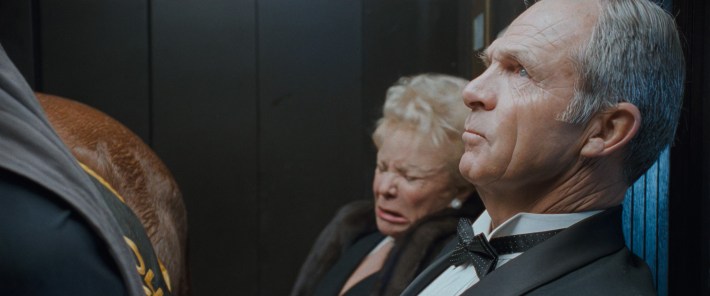
What makes all of this worse is that True Lies, as I understand it, did not need to be shoved through the AI wringer. According to The Digital Bits, Park Road Post had a recent 4k scan of True Lies from the original camera negative. Park Road Post’s own website claims they have a Lasergraphics Director 10K film scanner on the premises. So what is the purpose of adding AI to this mix? Why do that to a perfectly fine-looking film? What is gained here, other than to slightly yassify an Arnold film? At this point, maybe they are simply doing it just to say that they did, because the technology is lying around, like a loaded gun with the safety off.
Nerds who post on blu-ray forums as a rule often need to calm down, and the forum threads I have read about this are no exception, but there are certain cases where a filmmaker is just wrong about how their films should look. Lucas is the infamous notable example, but Cameron is not innocent here in his treatment of his own films. Wong Kar-wai is another notable example, as what he did to Ashes of Time is criminal as was his recent “remasters” of his movies like In The Mood For Love. In certain rare conditions like this, it’s healthy to question if directors have the best interests of their own films in mind, as Cameron himself personally approved of these remasters.

What actually chills my blood more than anything is the thought that a lot of people think this all looks pretty good. You see this mindset at work whenever an AI fetishist posts a stable diffusion image of a woman with 13 fingers, 40 incisors and comically huge breasts. There’s an entire portion of the population that takes overt pleasure in the over-smoothed, perverts that prefer all media to be fast, high frame rate, and scrubbed squeaky clean. The cameras on our phones don’t simply capture images anymore, they compute them and ‘optimize’ them. It’s Italian Futurism in 4k, a noise reduction death drive. It’s not simply enough for much of digital cinema to look crystal clear and lifeless; the past should be denoised, grain managed and cleaned to conform to that standard. It is expedient and profitable if people don’t remember what film is supposed to look like.
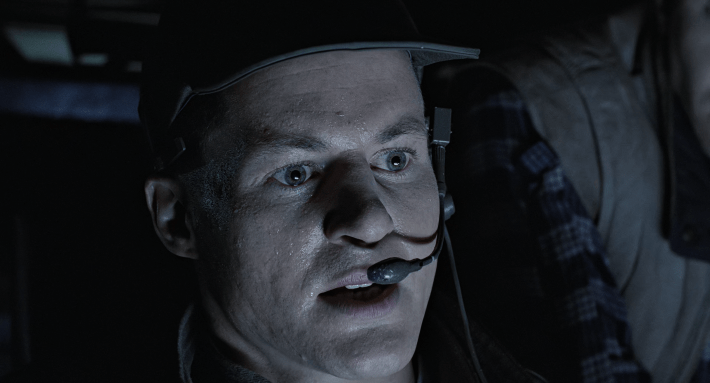
I don’t think anyone gets into preservation to destroy film. I believe that everyone involved with this process worked hard and had the best interests of the film in mind, but the exact nature of restoration itself can vary wildly. I believe that some companies get blinded by new tech, get high on their own supply, and that can result in work that is destructive instead of restorative. I don’t know what the solution to this is in the world we live in, outside of decoupling film preservation from the profit motive whenever possible.
But I am certain about one thing. For a while, much of gaming tried looking like Aliens. Now, Aliens looks like a video game. And that doesn’t sit right with me.


